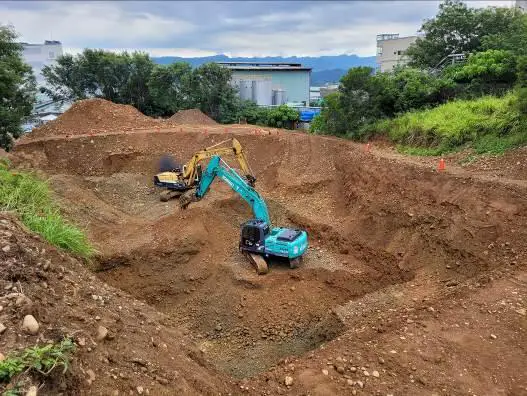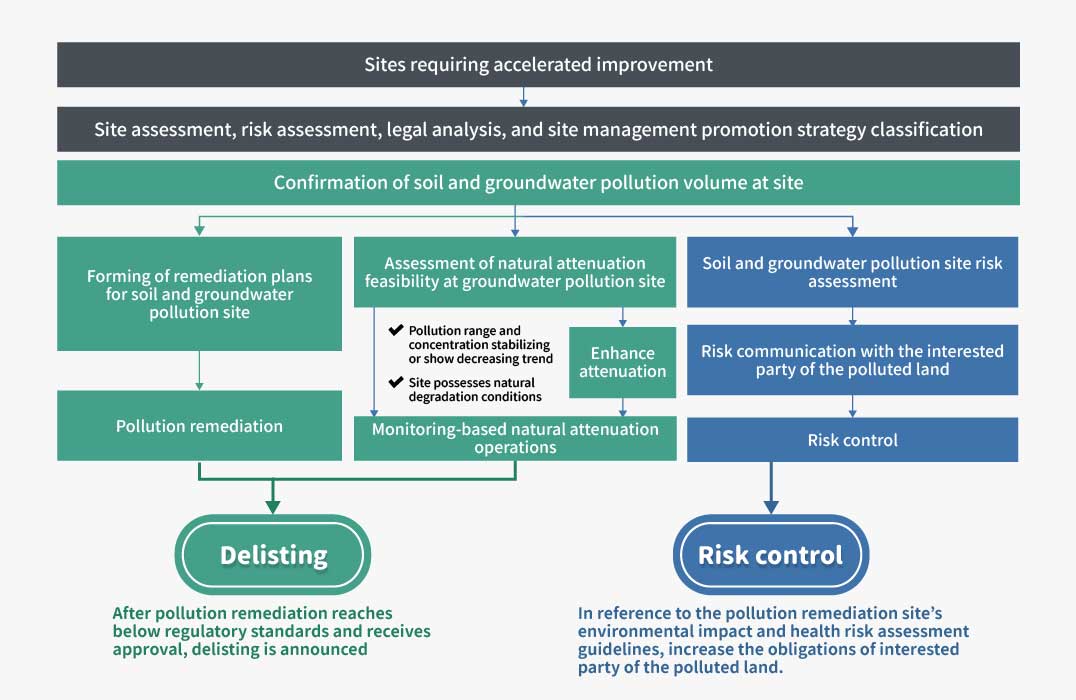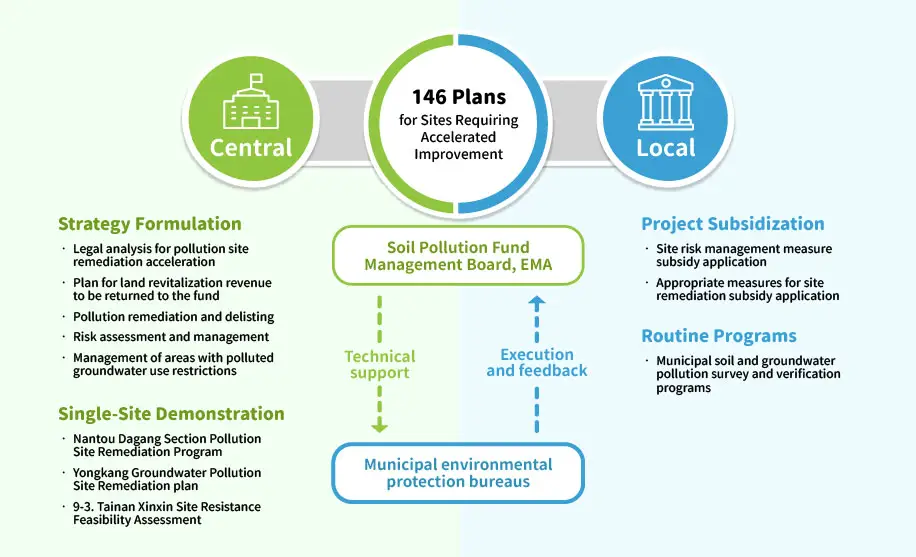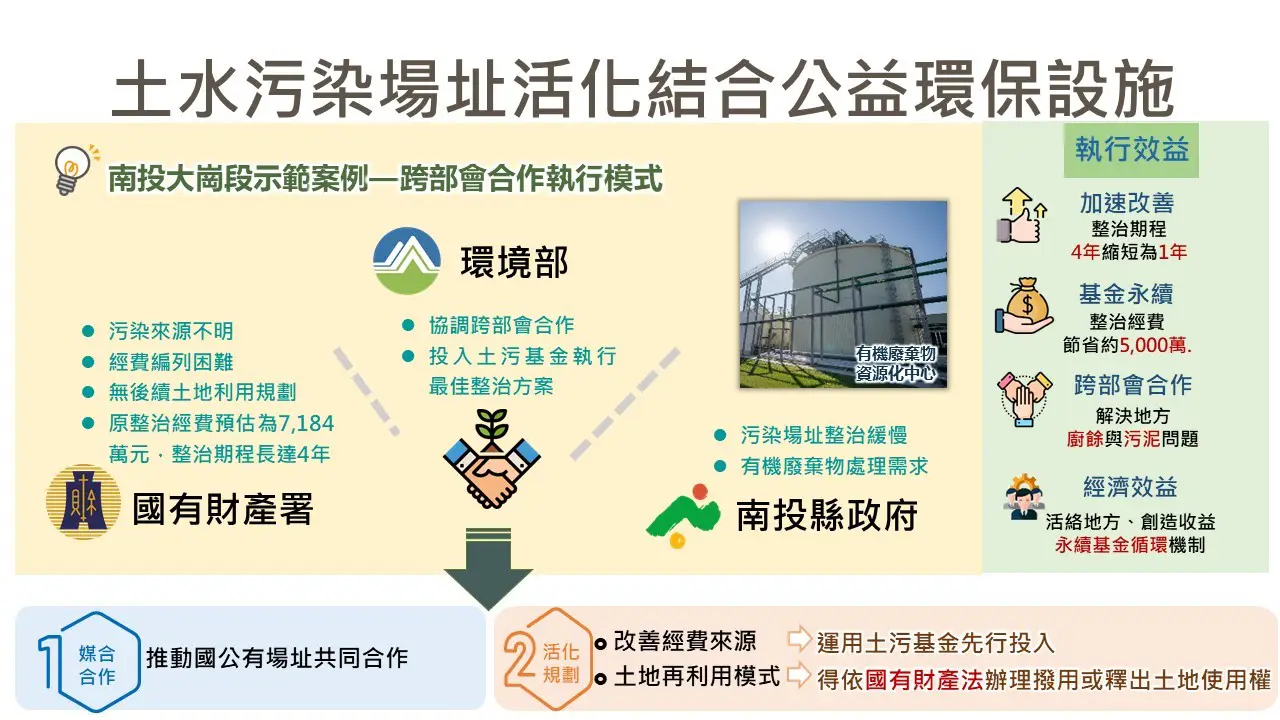 Management of Sites Requiring Accelerated Improvement
Management of Sites Requiring Accelerated Improvement

When a site is publicly announced as a soil and groundwater pollution control or remediation site, the responsible party must submit a pollution remediation plan and execute it upon approval by local environmental protection agency. To safeguard public health and protect environmental resources, we regularly assess the status of sites on the regulatory list, monitor remediation progress, and designate sites with stalled or unimplemented remediation efforts as "sites requiring accelerated remediation." Special attention is dedicated to advancing their pollution remediation and management.
Since 2017, efforts to accelerate pollution remediation have been intensified, followed by the implementation of plans to expedite the remediation of polluted sites. In 2024, a phased project approach was introduced to achieve comprehensive pollution remediation, ensure risk control, and integrate feedback into preventive management policies.
Policy StrategyFor sites on the regulatory list, 146 remain where the polluter has either failed to carry out remediation more than six months past due or remains unidentified, with no remediation initiated. These sites are now classified as "sites requiring accelerated remediation." To use administrative resources effectively, these 146 sites will undergo priority analysis to identify responsible parties, ensuring proper and efficient allocation of administrative resources. Through environmental site assessments, economic evaluations, and remediation feasibility studies, appropriate and practical pollution remediation and management strategies are developed and implemented.
Pollution Remediation Strategy- The "Soil and Groundwater Pollution Remediation Act" requires that pollution levels at polluted sites must be reduced below pollution control standards before the sites can be removed from the regulatory list.
- If parties responsible for pollution fail to remediate, a risk control approach will be implemented to protect public health and the environment.

- Increase the number of demonstration projects for pollution remediation to encourage proactive remediation and site management.
- Utilize the Soil and Groundwater Pollution Remediation Fund to assist local environmental protection agencies in remediating sites without identified responsible parties. The central competent authority will monitor progress to ensure timely completion.


The site, located in the Nangang Industrial Zone, was publicly announced as a pollution control site in 2019 after soil xylene levels exceeded pollution control standards in 2018. However, there was no identified responsible party, and no pollution remediation had been initiated for years.
In line with the Ministry of Environment's initiative for land revitalization and reuse and the Nantou County Government's demand for land to establish environmental protection facilities, a supplementary investigation was conducted. This investigation reviewed remediation methods, schedules, and costs.
The remediation project involved an excavation area of over 700 square meters, with approximately 5,500 cubic meters of excavated soil turned and aerated, and about 650 tons of polluted soil transported offsite. Following verification by the Nantou County Environmental Protection Bureau, the site was delisted, with the remediation period reduced from four years to one year and expenses decreased by approximately NT$50 million.
The land was transferred to the Nantou County Government to construct environmental protection facilities for processing local food waste and organic sludge. The facility is expected to process 30,000 tons of sludge annually, generating approximately NT$50 million in revenue. Part of this revenue is allocated to reimburse the Soil and Groundwater Pollution Remediation Fund, enabling reinvestment in future remediation projects, achieving multiple objectives such as the sustainable use of soil and groundwater resources, restoration of land value, and local revitalization.
Vision Starting with the end in mind, action strategies that promote sustainable resourceWe will focus on assessing potential pollution issues, conducting site investigations and confirmations to understand the scope and severity of the problem. Once the responsible party submits a remediation plan, local environmental agencies will review and approve it, ensuring continuous monitoring and progress tracking to prevent pollution recurrence and avoid delays in the remediation process.
Green and Sustainable Remediation ApproachIn addition to soil and groundwater pollution remediation, we will also promote green and sustainable remediation methods, seeking and applying sustainable solutions to address polluted sites. At the same time, we will adopt best management practices to minimize the environmental impact of remediation efforts, ensuring that remediation actions are not only effective but also cause minimal disruption to the environment.
- Data Source: Soil and Groundwater Pollution Remediation Fund Management Board
- Publish Date: 2024-11-28
- Update Date: 2025-11-10

 Related Topics
Related Topics


